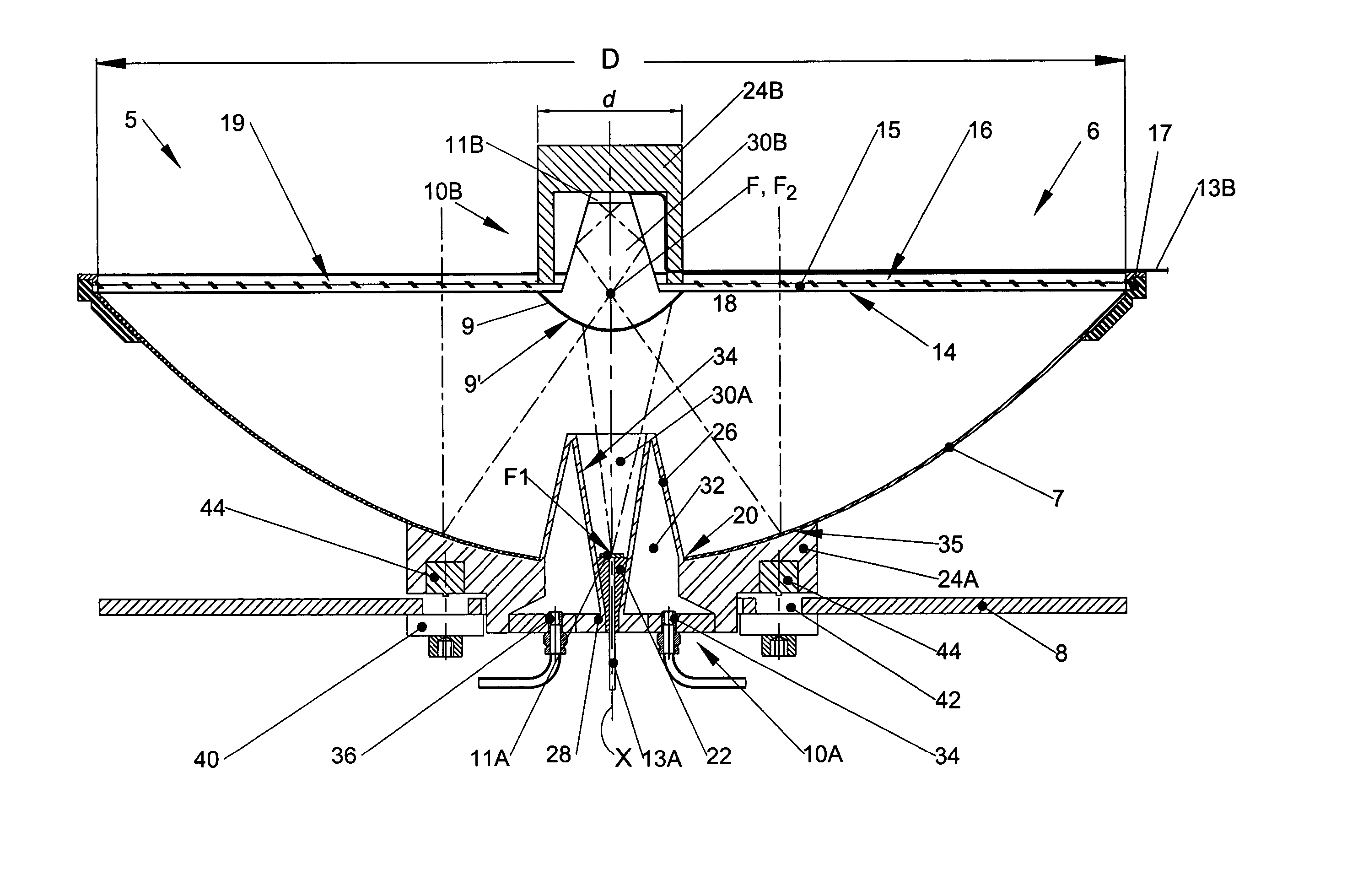Solar energy utilization unit and solar energy utilization system
a solar energy and solar energy technology, applied in the field of solar energy utilization systems, can solve problems such as the tendency to lose reflection abilities, and achieve the effect of minimizing the deterioration of quality
- Summary
- Abstract
- Description
- Claims
- Application Information
AI Technical Summary
Benefits of technology
Problems solved by technology
Method used
Image
Examples
Embodiment Construction
[0031]FIG. 1 shows a solar energy utilization unit 5 in accordance with one embodiment of the present invention. The unit 5 comprises a solar radiation concentrating optics 6 including a concave primary reflector 7 and a convex secondary reflector 9, and a solar receiver designed to convert the radiation concentrated by the optics 6 into electric energy, the solar receiver comprising a first and second photovoltaic receiver components 10A and 10B, each associated with either primary reflector 7 or secondary reflector 9.
[0032] Each receiver component 10A, 10B comprises a photo-voltaic structure 11A, 11B, which may be a singular plate cell or an array of cells. The photo-voltaic structures 11A and 11B have different sensitivity wavebands, e.g. one of them is sensitive to radiation in the IR part of the solar spectrum and the other—in the visible part, and are designed to convert radiation within their corresponding wavebands into electric energy. The structures 11A and 11B are provid...
PUM
 Login to View More
Login to View More Abstract
Description
Claims
Application Information
 Login to View More
Login to View More - R&D
- Intellectual Property
- Life Sciences
- Materials
- Tech Scout
- Unparalleled Data Quality
- Higher Quality Content
- 60% Fewer Hallucinations
Browse by: Latest US Patents, China's latest patents, Technical Efficacy Thesaurus, Application Domain, Technology Topic, Popular Technical Reports.
© 2025 PatSnap. All rights reserved.Legal|Privacy policy|Modern Slavery Act Transparency Statement|Sitemap|About US| Contact US: help@patsnap.com



